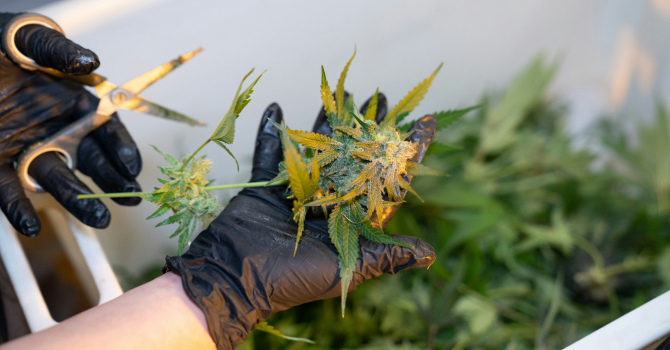August 02, 2024
by Weedwonderland
4 minutes
How to make wax dabs?

If you’re intrigued by the process of transforming weed to wax and are keen to craft your own wax concentrate, this guide is here to lead you through every step. From selecting the best butane for making wax to comprehending the process of turning wax of weed, this tutorial will equip you with the essential techniques needed to produce your own potent wax dabs.
The Fundamentals of Crafting Wax from Cannabis
Cannabis concentrate, often known as weed wax, is renowned for its exceptional strength and rapid onset of effects. The primary method for creating wax involves extracting THC and other crucial cannabinoids using a solvent, with butane being the most common choice. Selecting a high-quality solvent is critical; the best butane for wax ensures that the final product is both pure and safe. This extraction technique is favored for its ability to yield a highly concentrated and pure form of cannabis. The result is a clean and potent product that delivers intense effects, preferred by seasoned cannabis users looking for a deeper experience.How to make wax from cannabis ?
- Preparation: Start by selecting premium, dried, and well-cured cannabis. The quality of your starting material significantly affects the final concentrate’s potency, flavor, and purity. Choose strains known for their high resin content and robust profiles to ensure a potent and effective concentrate.
- Extraction: Whether you’re making hash wax or extracting directly from the plant material, consider using a closed-loop system for enhanced safety and efficiency. Fill a container with cannabis and pass butane through it. This method effectively extracts essential oils, cannabinoids, and terpenes from the plant. Always opt for the highest purity butane to minimize impurities and enhance both the safety and quality of your concentrate.
- Evaporation: The next crucial phase is butane evaporation, typically performed using a water bath or a vacuum purge setup. The vacuum purge technique is particularly beneficial as it lowers butane’s boiling point, enabling a cooler purge that better preserves delicate terpenes and cannabinoids. The objective is to remove all butane traces, leaving behind a pure cannabis concentrate.
- Collection and Storage: After purging the butane, collect the remaining wax concentrate using non-reactive tools such as silicone or stainless steel to prevent any chemical interaction. Store the concentrate in airtight containers, preferably made of glass or PTFE, to avoid air exposure that could degrade the cannabinoids and terpenes. Keeping the concentrate in a cool, dark environment is crucial for preserving its potency, flavor, and overall quality.
- Monitoring the Environment: It is essential to continuously monitor your workspace’s temperature and humidity during extraction and evaporation. Keeping these factors at optimal levels prevents the degradation of active compounds and ensures a safer operation.
- Implementing Advanced Techniques: By adopting these sophisticated techniques and handling each step with care, you can produce a superior quality cannabis wax concentrate. Paying close attention to environmental control not only enhances safety but also significantly boosts the concentrate’s potency and sensory profile. This meticulous approach ensures the final product provides a robust and enjoyable experience, fully harnessing the original cannabis material’s potential.
Additional Tips and Safety Measures
- Safety First: Making shatter wax and other concentrates at home can be risky due to the flammable nature of butane. Always work in a well-ventilated area and consider investing in professional-grade equipment for regular concentrate production.
- From Hash to Wax: If you start with hash, the process requires breaking the hash down before it is processed similarly to plant material, often yielding a wax of different texture and type.
- Understanding the Product: Being knowledgeable about how weed wax is crafted can enhance appreciation for the product and inform consumption and dosing decisions.
Blog categories




